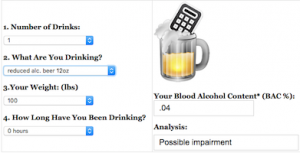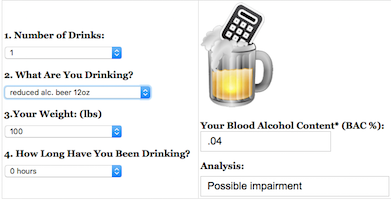
It is difficult to assess the level or degree of impairment from alcohol due to a number of factors. But according to some experts, just a small amount can affect the brain, and change driving behavior. And the troubling thing is that many car owners and drivers will say that they are normal and think straight even if they are not. Now, this is a classic symptom of impairment- not realizing that alcohol is already clouding your judgment. The lower levels of impairment of the person may not be noticed by the other person, but for the driver, he will easily know where the ‘buzz’ starts. And there is a big chance that the driver is already impaired before he even knows it.
How BAC Impacts the Body
Even a small amount of alcohol can impact both coordination and judgment when drinking, with each drink increasing your overall impairment. Too much alcohol and your body will ultimately shut down, resulting in organ failure and even death. It’s important to understand that individuals may react differently to alcohol intoxication at each BAC level. In general, they may exhibit some or all of the following symptoms and behaviors.
.02 BAC
At this level, the muscles start to relax. Inhibitions are also reduced, with many individuals experiencing a heightening of whatever mood they may have been in before they started drinking, whether that be a positive or a negative state of mind.
.05 BAC
Once you reach this level, you may start experiencing a mild euphoria. Your body temperature starts to feel elevated and your inhibitions become even more relaxed, along with an even greater exaggeration of mood.
.08 BAC
This is the legal BAC limit in many states, and typically for good reason. At this point you may think you’re not intoxicated, but your speech has started to slur, your ability to walk and stand starts to become more difficult and your reaction times slow. At this level of intoxication, motor skills are largely impacted and driving a car becomes dangerous (though for many, even at lower levels you should not be behind the wheel of a vehicle).
.10 BAC
At this level, your intoxication is more apparent both to yourselves and to those around you. Your judgement, memory, motor skills and balance are all reduced, and you start to forget just how many drinks you’ve had. Depending on the individual, you may become loud or belligerent. Men begin to experience difficulty achieving and maintaining an erection at this level.
.14 BAC
Once above .13, feelings of euphoria start to drop, and feelings of sickness, dizziness, and difficulty controlling the body take over. Each of the negative effects of drinking at lower alcohol concentrations are markedly more severe. At this point you may also start to black out.
.20 – .30 BAC
Alcohol sickness starts at this level, often resulting in vomiting. When this intoxicated, gag reflex is severely impacted, dramatically increasing the risks of choking on your own vomit. Blackouts are more frequent, and your memory starts to blackout as well. Pain sensors are dampened, which means that if you are injured at this point, you may not know it or feel the pain from it. This also reduces the chances you’ll go to get help.
.35 BAC
Once at .35, your blood alcohol level is similar to the effects of being under anesthesia. Your brain function is reduced, which also reduces your respiratory rate, causing you to potentially stop breathing.
.40 BAC
If you have not stopped breathing by this point, your body will most likely enter a coma state. Your heart rate will slow, and your chances of survival are very low.
Want to work out your BAC after an evening’s drinking? Here’s a link to a quick calculator. http://www.sr22insurance.net/bac-calculator/

